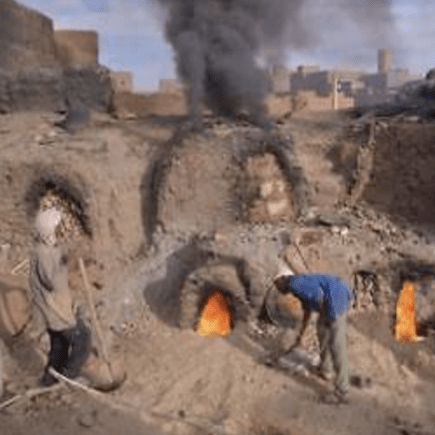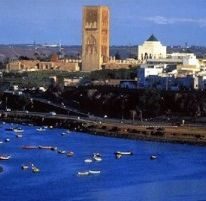
Every day in Morocco potter’s hands mold the burnt orange clay, wheels turn and ceramic bowls bake in the heat. It’s a daily process. In the villages, women head down to the river bank to dig the moist clay from the earth. Retracing their steps back home with full woven baskets. A heavy load. The clay drips. Water stains the dry dirt. Morocco is well known for its wide range of ceramic pottery. The pots are generally used for daily life, a large number are bought by tourists, while others are exported overseas. Pottery also lines the souks, hand-painted with fine detail, deep colors and a variety of handspun designs.
The city of Fes is known for producing high-end pottery that is produced in a variation of colors and double glazes. In Zagora, the holy village of Tamegroute’s claim to fame throughout history is the beautiful pottery created that has a glaze made of henna and is sun-dried. When visiting Zagora you can learn first hand how the pottery is made and glazed. Pottery workshops are offered by artisans. You can try spinning it on a local wheel by hand or make your own piece to take home.

The clay is dug from local river banks, thrown by hand and fired in kilns built into steep slopes in the countryside. Oxidized copper produces the characteristic green glaze. In the ovens, the pieces are stacked together, which creates small linear scars. This is what makes them unique. Each piece is different with its own imperfections. Tamegroute is the only village in Morocco known to produce pottery with a distinct green and brown glaze.
Tamegroute has been a religious center since the 11th century. The Nasiriyya brotherhood brought the native techniques and green enamel from Fes to Tamegroute, assembling merchants and craftsmen to raise the status of the city.

The pottery cooperative in Tamagroute is one of the attractions for tourists visiting the Zagora region. Pottery is made and bought on the spot at cooperatives. Some of the village roofs of Tamegroute are also tiled with using this earthy green ceramic clay. When the sunlight streams down, the green roofs glisten against this desert town.

The green glaze used in Tamagroute is made from a combination of magnesium and copper. The ceramic pots and dishes with this glaze are waterproof. A trip to the pottery villages is a great way to get inside the local culture of Morocco, to experience traditional work made by hand, and to take home a sustainable and “green” souvenir.
Travel Morocco’s Pottery Cooperative, Pottery Lessons in Morocco, Morocco, Celebrate Moroccan Pottery, Morocco Travel, Tours to Morocco, Morocco Tourism






